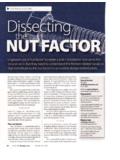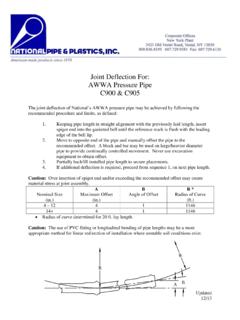Transcription of Sacroiliac Joint Exercises For Pain Relief
1 Sacroiliac Joint Exercises For Stability And Pain Relief By Sam Visnic NMT. 2011 Sam Visnic All Rights Reserved. Warning! This information is NOT medical advice, and does not replace the diagnosis nor treatment of a licensed physician. This report and related content is for information purposes ONLY. Always seek the advice of a qualified health care professional before beginning any health program. Any actions taken as a result of reading this report and/or related information is at your OWN risk. , Sam Visnic, and all related affiliates and associates, assume no liability as a result of actions taken on your part. Learn More About Sam's Protocols at: or Copyright 2011. Sam Visnic. Page 1. What are the symptoms of Sacroiliac Joint Pain? As you can see from the image above, the most common area of pain related to SI Joint problems is right next to the small bones that can be felt just to the sides of the lower spinal vertebrae called the posterior superior iliac spines.
2 (PSIS for short). Of course, this area is not necessarily the only spot that can have pain due to SI Joint issues. Pain can be felt over the hip Joint , down to the gluteal and hamstring muscles, and even up the lumbar spine. Learn More About Sam's Protocols at: or Copyright 2011. Sam Visnic. Page 2. Frequently, SI Joint dysfunction is overlooked and misdiagnosed, mostly due to the multiple effects that are seen as a result that makes the overall situation appear to be multi-factorial and complicated. SI. Joint expert, Richard Don Tigny, has identified the following: More Direct Effects Of The Subluxation At S31. 1. The gluteus medius is inhibited when held in anterior rotation 2. The ilial origin of the gluteus maximus is separated from its sacral origin 3. The iliolumbar ligaments are loosened as the ilia approximate the vertebra 4.
3 The long posterior ligaments will be stretched and may avulse from the PSIS. 5. The ilial origin of the piriformis is separated from its sacral origin 6. If the sciatic nerve exits through the piriformis it may become painful Now, I know that may sound like a lot of anatomy gibberish, so let me make it clearer. Essentially, when the SI Joint bone/s become mis-aligned (also called subluxed), they move the points at which the muscles attach further apart. When this occurs, it can cause strain. In some cases, as in #6 listed above, the sciatic nerve may become choked and cause irritation and pain. At first when the SI Joint dysfunction appears, these may not all be present, but as the problem becomes chronic, some or all of them may appear and make it very difficult for the average doctor or therapist to see through to the root cause of the pain.
4 What are the most common causes of SI Joint pain? Just like any other back pain issue, there can, of course be many very complicated issues, from nerve entrapment to spinal derangements, and even infections. However, assuming these major issues have been ruled out, the two most common causes of pain are: 1. Mechanical dysfunction 2. Structural leg length discrepancy Mechanical Dysfunction This refers to the irregular movement of the SI Joint (which shouldn't move much at all). The most common mechanical dysfunction, according to DonTigny, is subluxation of the Joint at S3. 1. More Direct Effects Of The Subluxation At S3. Image Captions. DonTigny, Richard. Learn More About Sam's Protocols at: or Copyright 2011. Sam Visnic. Page 3. The picture above shows the direction that the pelvic bone moves during the S3 subluxation, which is up and out from the sacrum.
5 For those of you who are familiar with the term, another way of putting it is anterior pelvic tilt on that side. Now, just to prevent 100 emails from hitting my inbox after this document is released, you have probably found through various searches online about SI Joint dysfunction that there appears to be many faulty dysfunctions that can be present, for example, a posterior upslip , etc. Even though these mechanical issues can be found through assessments, it is thought that these are SECONDARY. subluxations to the S3, and mostly irrelevant once the correction is made at S3. Therefore, what I am saying is that you can skip all the arguments between therapists and doctors about the above, and get right to the main correction, which is at S3, and the other dysfunctions will be corrected at the same time.
6 Structural Leg Length Discrepancy A structural leg length discrepancy is when you have a leg that is ACTUALLY shorter than the other. This should be measured via a full lower extremity X-ray. A special note here needs to be made. Many people do not actually have a structural leg length issue. Relying simply on measuring the leg length at the ankles is NOT enough to confirm a short leg. Too often, practitioners are quick to add a heel lift into a shoe which can cause more problems than it solves. A functional short leg is often the result of the SI Joint subluxation. As the dysfunction is removed, the leg length balances out. If indeed a leg is confirmed short, appropriate measures such as heel lifts or shoe inserts/raises should be considered by a qualified specialist in postural dysfunction. Learn More About Sam's Protocols at: or Copyright 2011.
7 Sam Visnic. Page 4. How to fix SI Joint dysfunction Correcting SI Joint dysfunction starts with ruling out serious issues with the Joint . As always, a trip to your doctor can address these. If you are cleared for serious pathology, then mechanical corrections are the next step. Correcting the subluxation at S3. There are a number of simple self-corrections that can be done, but I find the one that is MOST useful involves a partner (preferably a therapist or chiropractor). The reason why the partner version is best is because there are actually no muscles that move the SI Joint itself. Muscles surround the Joint , and influence it, but none have the ability to move the Joint itself. Now, I'm not against the self-corrections, because sometimes they do work, but the partner-assisted versions I have found to be MUCH more efficient for correction.
8 The goal of these mobilizations is to move the pelvic bone into posterior tilt and down on the sacrum, which is the opposite motion as the subluxation in the picture above. When performing SI Joint mobilizations, be sure to do the correction on BOTH sides. This is a critical point. You MUST correct both. How is the correction done? You won't believe how simple the correction is to perform. When I first learned of this maneuver from Richard DonTigny's work, I was floored at how fast one could get SI Joint pain Relief . It's not uncommon for someone with pain at an 8 on a 10 scale to go down to a 2 or 3 within minutes. (Provided the pain was coming from the SI Joint ). The primary goal of the correction, as stated above, is to essentially move the pelvic bone into posterior tilt. This can be done a number of ways, as indicated on Don Tigny's website2, but here are the two I.
9 Recommend: 2. (Richard DonTigny's website). Learn More About Sam's Protocols at: or Copyright 2011. Sam Visnic. Page 5. The Self-Correction Exercise The starting position involves the foot flat on the ground, about 6-8 inches from the glute. The goal is to push the thigh toward the foot until the glute comes up off the ground. In addition, an effort should be made to squeeze the glute on that side. The toughest part about this movement for most people is letting the NON-working side completely relax. This may take a bit of practice. Perform the motion gently, and repeat for 5-8 reps, then switch sides. If someone is monitoring your leg length at the ankles (at the medial malleoli), they will notice that after each set, there will be a change in the length of the leg relative to the other. If the movement produces no pain, each side can be done in an alternating fashion UNTIL NO FURTHER.
10 LEG LENGTH CHANGES OCCUR. This usually takes around 2-3 sets on each leg. CAUTION: Personally, I feel that attempting to make a full correction on day 1 for some people is NOT a good idea. Depending on how long the dysfunction has been present, there are likely to be many compensation patterns that have occurred in your body, and a full correction may be akin to, for example, having flat feet for years and suddenly getting a new pair of orthotic shoe inserts with a FULL. correction on day 1. In case you don't know what I mean by this, doing this may create all sorts of aches and pains far from the SI Joint . I feel that it is far better off starting with a small amount of correction at first to test, then increasing aggressiveness pending the results. (Most back pain sufferers have no problem, but JUST in case ).







